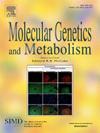Newborn screening for spinal muscular atrophy: The potential of digital polymerase chain reaction technique
IF 3.5
2区 生物学
Q2 ENDOCRINOLOGY & METABOLISM
引用次数: 0
Abstract
Spinal muscular atrophy (SMA) is a degenerative neuromuscular disorder caused by a homozygous SMN1 loss-of-function variant. Early detection of SMA at the pre-symptomatic stage is essential for effective therapy. Consequently, Japan initiated newborn screening (NBS) for SMA in 2021 in the Kumamoto Prefecture, following global recommendations and implementations.
The current NBS protocol involves a two-step process: first, quantitative real-time polymerase chain reaction (qPCR) for SMN1, followed by SMN1 and SMN2 copy number analysis using multiplex ligation-dependent probe amplification (MLPA). However, this approach is time-intensive, and qPCR alone cannot distinguish a single copy of SMN1 exon 7. The current NBS protocol is designed to detect approximately 96 % of SMA cases, specifically those with homozygous SMN1 exon 7 deletions.
This study developed a digital PCR system for simultaneous analysis of SMN1 and SMN2 copy numbers to reduce the diagnostic time and improve diagnostic accuracy. Digital PCR was tested on dried blood spot (DBS) samples from 6 SMA patients (P-1 - P-6) and 386 healthy newborns. Additionally, the SMN1 and SMN2 copy numbers of the 6 patients were evaluated using MLPA.
The results demonstrate that digital PCR enables simultaneous analysis of SMN1 and SMN2 copy numbers, with the outcomes for all six patients matching those obtained through MLPA. Moreover, digital PCR was more cost-effective than qPCR.
Thus, digital PCR offers a practical and efficient alternative for SMA screening in NBS, enabling simultaneous analysis of SMN1 and SMN2 copy numbers while also improving the diagnostic speed and accuracy.
新生儿脊髓性肌萎缩症筛查:数字聚合酶链反应技术的潜力
脊髓性肌萎缩症(SMA)是一种由纯合子SMN1功能丧失变异引起的退行性神经肌肉疾病。在症状前阶段早期发现SMA对于有效治疗至关重要。因此,根据全球建议和实施情况,日本于2021年在熊本县启动了SMA新生儿筛查(NBS)。目前的NBS方案包括两个步骤:首先,对SMN1进行定量实时聚合酶链反应(qPCR),然后使用多重连接依赖探针扩增(MLPA)分析SMN1和SMN2拷贝数。然而,这种方法耗时长,qPCR不能单独区分SMN1外显子7的单个拷贝。目前的NBS方案旨在检测大约96%的SMA病例,特别是纯合SMN1外显子7缺失的病例。本研究开发了一种同时分析SMN1和SMN2拷贝数的数字PCR系统,以减少诊断时间,提高诊断准确性。对6例SMA患者(P-1 - P-6)和386例健康新生儿的干血斑(DBS)进行了数字PCR检测。此外,使用MLPA评估6例患者的SMN1和SMN2拷贝数。结果表明,数字PCR可以同时分析SMN1和SMN2拷贝数,所有6例患者的结果与MLPA获得的结果相匹配。此外,数字PCR比qPCR更具成本效益。因此,数字PCR为NBS中SMA筛查提供了一种实用而有效的替代方法,可以同时分析SMN1和SMN2拷贝数,同时提高诊断速度和准确性。
本文章由计算机程序翻译,如有差异,请以英文原文为准。
求助全文
约1分钟内获得全文
求助全文
来源期刊

Molecular genetics and metabolism
生物-生化与分子生物学
CiteScore
5.90
自引率
7.90%
发文量
621
审稿时长
34 days
期刊介绍:
Molecular Genetics and Metabolism contributes to the understanding of the metabolic and molecular basis of disease. This peer reviewed journal publishes articles describing investigations that use the tools of biochemical genetics and molecular genetics for studies of normal and disease states in humans and animal models.
 求助内容:
求助内容: 应助结果提醒方式:
应助结果提醒方式:


